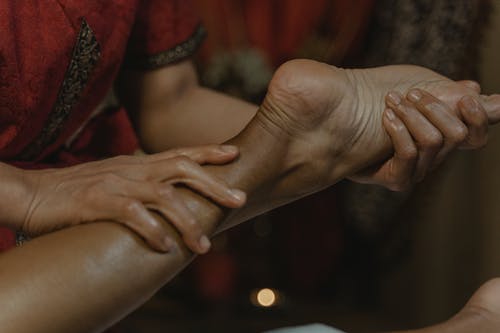How does peripheral arterial disease affect your feet?
 Peripheral arterial disease (PAD) occurs when there is plaque build-up in the arterial walls. This decreases the blood flow in the arteries and prevents oxygen from reaching the legs, causing foot problems.
Peripheral arterial disease (PAD) occurs when there is plaque build-up in the arterial walls. This decreases the blood flow in the arteries and prevents oxygen from reaching the legs, causing foot problems.
Symptoms of PAD
- Pain while walking
- Pain when lying down
- Numbness in feet
- Weakness in feet
- Cold feet
- Sores
- Change in skin color
- Loss of hair on feet
- Change in toe color
- Brittle toe nails
Risk Factors for PAD
- Being over 50 years of age
- Smoking
- Diabetes
- High blood pressure
- High cholesterol
- Family history of PAD or heart disease
- Sedentary lifestyle
How is PAD diagnosed?
The podiatrist will do a physical examination, and based on the condition of your feet may suggest further tests. This could include blood tests to check blood levels. There may be further non-invasive tests like the ankle-brachial index to assess for PAD.
Also Read: How to Prevent Nail Problems and Injuries
Treatment of PAD
- Lifestyle changes like stopping smoking, regular exercise and a balanced diet.
- Medications like blood thinners and pills to control diabetes and blood pressure.
- Surgery, in severe cases.
Complications of PAD
If left untreated, PAD can cause foot deformities like hammertoes and bunions. Toe Nail Problems, like ingrown toe nails and fungal problems, can become more serious for someone with PAD. Since PAD prevents sufficient oxygen from reaching the legs, even small cuts, blisters or sores, can result in serious complications as wounds take a long time to heal.
Avoiding PAD Complications
- Maintain foot hygiene
- Keep feet well moisturized
- Prevent cracked heels
- Trim toe nails regularly
- Wear shoes and socks to avoid injuries or bruises
- Wear correct fitting shoes to avoid pinching or blisters
A person with PAD should have a regular consult with a podiatrist for continuous monitoring of his/her feet. With a bit of care, the complications related to PAD can be prevented.
- Mar 17, 2021
